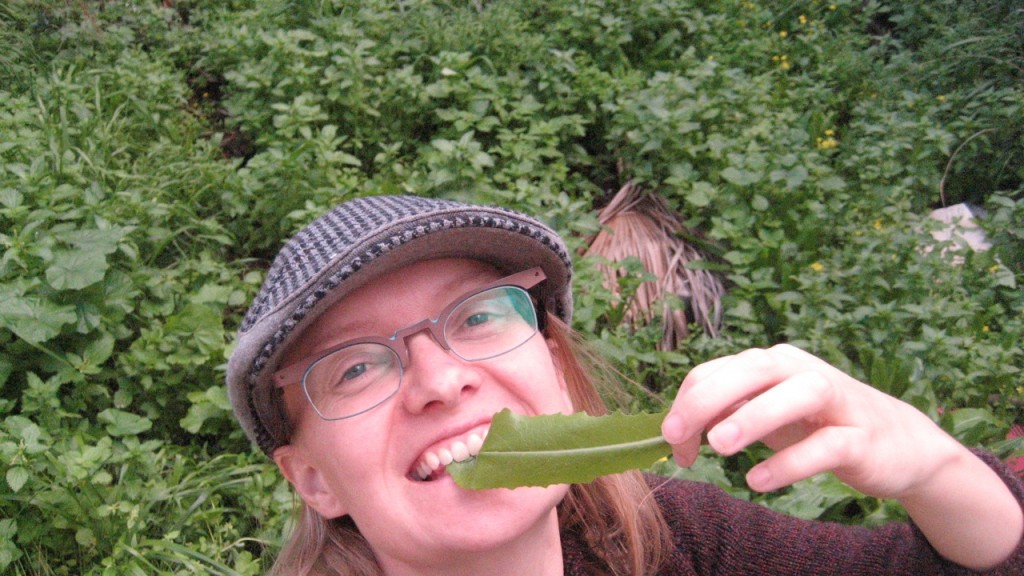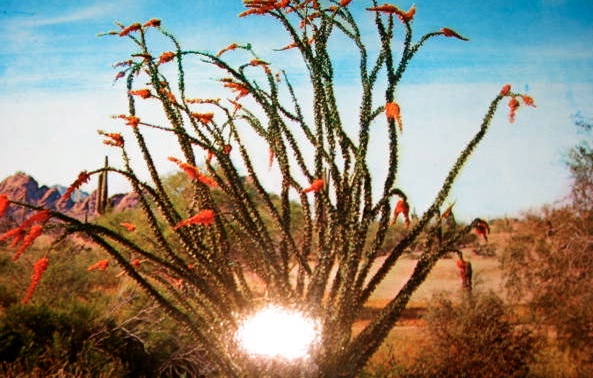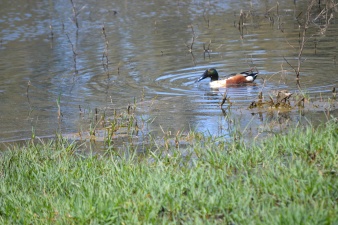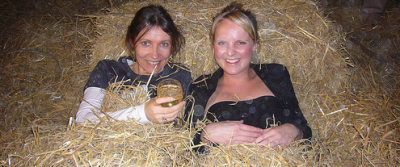Every morning I feel oneness with nature and my creator when I go to my green city garden just outside my front door in Tel Aviv. There I watch my passion fruit vine grow with tenacity; every morning I check its small tendrils racing to catch the sun while it reaches out to clasp any solid object.
As the passion fruit and other plants in my Mediterranean garden grow bigger – the olive trees, the myrtle, cactuses, native grasses and vines – an increasing number of animals find and build homes next to mine.
 Outside my door I can find small lizards basking on sun-kissed rocks, translucent salamanders playing peek-a-boo inside the carpet of leaves, and tiny flies munching away on the compost heap.
Outside my door I can find small lizards basking on sun-kissed rocks, translucent salamanders playing peek-a-boo inside the carpet of leaves, and tiny flies munching away on the compost heap.
Whether you cull a garden to grow organic herbs and vegetables, or use your space for resting and relaxation among your trees and bushes, the garden space should be first on your list to going green.
According to ecologicalgardens.com native plants should be the backbone of your green garden. When plants are selected and grouped into plant communities based on the ecological roles or functions they perform, they say, the gardener will spend less time managing weeds and pests and more time managing the diversity and variety of plants in the garden.
“Ecological gardening is about cultivating relationships not just plants,” explains the website. There are “relationships between birds and berry bushes, between bees and insectary plants, and between humans and plant foods and medicines.”
In a global sense (and in Israel too) your garden should mirror the cycles of seasons including birth, growth and decay and it should touch and awaken all your senses.
Getting started, let’s look at our water resources. Growing plants indigenous to your region, and matching them to your climate and water needs is practical and environmentally responsible.
Even in areas where water is plentiful (which is not the case in the Middle East), it is wise to conserve where you can. A tremendous amount of energy goes into processing and pumping water to your home – up to 50 percent of every community’s energy consumption can come from pumping and transporting water. The by-products emit greenhouse gases and contribute to global warming.
A simple way you can keep water in the system before it runs back to the sewer is by channeling water runoff from rain into collection barrels, slightly elevated above ground level, with a spout you can connect to a water house or watering can.
Another way is by redirecting grey water (previously used water from the shower, laundry machine or sink) straight into the garden.
When I had a sink installed for my ceramic studio (where I use a considerable amount of water getting muck off my sleeves and tools), I built the drain to empty into a large bucket, which I easily managed to carry and pour onto my plants, which couldn’t be happier.
Be kind to the earth and to yourself. It is known that traditional pesticides used in the garden contain deadly neurotoxins and other chemicals that cause diseases too ugly to mention. Instead, for small weeds, try using boiling water and pour it directly onto the roots; concentrated lemon juice works well too.

Remember, a weed is only a weed because people have declared it so.
You can also rethink their value and perhaps learn to like dandelions and scrub grass. For example, in 2004, UK scientists at the Royal Botanical Garden in Kew found that dandelion extract has the ability to ward off cancer cells.
This example shows that there is an intrinsic value in everything in nature. But, that doesn’t mean you have to overlook your needs if you can’t stand mosquitoes.
When you keep chemicals away and your space ‘green,’ small animals, insects and birds will appreciate moving into your garden. Consider giving them stones and logs to hide behind and live under; and build additional habitat for ladybirds, bees and hedgehogs. If all else fails, there is always the good old birdbath.
Green Garden Reading
There is no end to gardening books you can pick up at your bookstore or library. A couple of our favorites are You Grow Girl, an alternative ‘green’ gardening book for waking up the inner gardener in all of us. Suitable for cities or the country, author Gayla Trail can help you with everything from growing rare breeds of organic vegetables on your patio to making your own garden equipment.

She can also teach you about composting in cities and how to make the most of the seasons even when you live in frosty climates.
Another good primer for growing a green garden is Hold Your Water – a good read on conserving and making the most from water resources. It explains how the rest of the planet is affected when resources are compromised.
Lastly, an essential green read is Gaia’s Garden: A Guide to Home-scale Permaculture.
“An ecological garden,” says the book, “is a backyard ecosystem that seeks to mimic natural ecosystems but with increased abundance, beauty, and diversity. An ecological garden is based on a set of design principles that include gardening with nature, gardening for biological diversity, and grouping plants into self-sustaining communities.”
We can grow to that!





I have a green lizard living in my home since it was a baby. Now its full grown and it don't look too healthy. What can I feed him and should I give him water?
I have an outdoor lizard living inside my house, he's been inside since he was a baby lizard and now he is full grown but is looking not so good. What do green lizards that sometimes turn brown eat and how often do they drink. I am afraid to put him outside now because he is used to being inside and even not afraid of us at all. He will get eaten right away if we put him outside. Please tell me what to feed him. Thank you
There are halachic restrictions on potted plants during shmitta, whether in the house or on the balcony. There are a lot of qualifications and different opinions; I can’t give enough guidelines in a website comment. If you have potted plants or a mirpeset garden, and you wish to deal with it in a correct halachic manner during shmitta, I suggest consulting with a competent rabbi. There are classes and books as well.